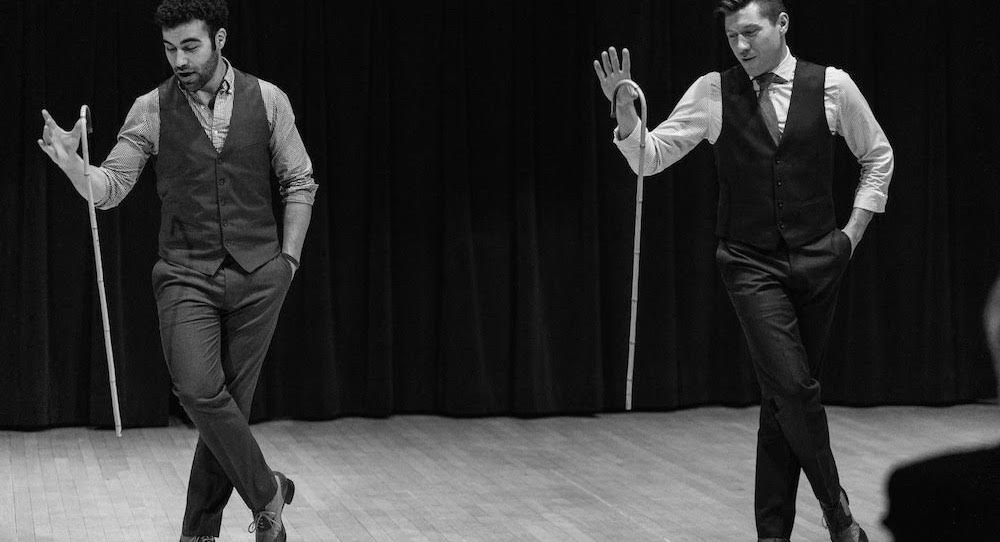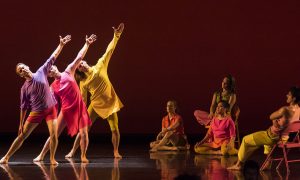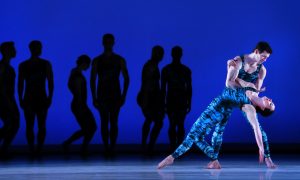Some dancers nowadays don’t feel like tap needs to be part of their repertoire. The traditional trifecta of “tap, jazz and ballet” classes is obsolete as dance students have infinite styles to choose from and are often more compelled to take trendier genres rather than these “old school” techniques.
But tap certainly isn’t going anywhere. Tap will always be that gem of a musical on Broadway, standing-ovation specialty number on a TV program, or electrifying live performance at a dance festival or showcase.
Learning tap is definitely a commitment — purchasing a specific pair of shoes, learning an entirely new language of movement and approaching musicality from musician’s perspective. But your knowledge and dedication from learning tap will transcend to your other dance styles — understanding dance history and culture, rhythm, grace, weight change, style, improvisation and more.
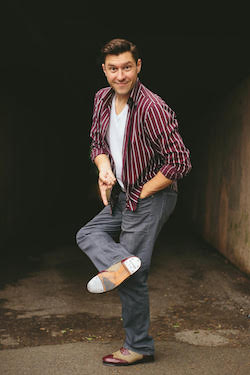
Justin Boccitto. Photo by James Jin.
Dance Informa was lucky to chat with one of the most sought-after tap instructors in the business. Justin Boccitto teaches, directs and choreographs internationally, and is on faculty at a number of schools, including Broadway Dance Center, CAP 21, Marymount Manhattan College, Cirle in the Square and The Juilliard School. His classes range from basic introductory workshops to advanced master classes focusing on technique, style and musicality. Boccitto’s two cents? The gateway to tap dance is finding a teacher you really gel with. Read more about Boccitto’s background, upcoming projects and advice for “finding your footing” in tap class.
What was your dance background growing up? How did you come to start tap dancing?
“I studied through a youth theater program that met on Saturdays for 15 weeks three times a year. It was called the Centenary Young Performers Workshop and run by Michael Blevins. Blevins is an accomplished tap dancer and Broadway veteran who worked with Danny Daniels (who just passed away this July) on The Tap Dance Kid. He was hired to train Savion Glover, Dule Hill and Jimmy Tate on the show. At Centenary, we would rehearse three to five full scale musicals at the same time and open them in repertoire for two weekends. It was like summer stock on overdrive! This was amazing training, and Michael Blevins taught all the students how to tap dance. After Centenary, I continued my studies with the late Bettye Morrow in New York City at Broadway Dance Center.”
For many dancers, tap is (or at least seems) more challenging to start up later in life. Why do you think this is?
“I think it’s all about the approach. Some teachers just go too fast and are not proficient at explaining it. For me, this means you have to be good at explaining the technique in every ‘language’ —counting it, saying it, singing it. You have to gauge how the student learns first and then choose which approach will work for them. Your goal is to also make it fun while still challenging. I find keeping students stuck in the mirror — in one place for the full 90 minutes — just doesn’t work for me. I need to move them around the room, constantly changing things up and choosing music they’re excited to move to. Blevins used to also tell me, ‘You always need to leave them with hope or they won’t come back!'”
What advice would you give to a newbie tap dancer?
“Try several teachers at first to find the one (or few) that works for you. Sometimes, I’ll have people come to me and say they didn’t pick up very much from the class. I respond by saying, ‘Come back for another session, and if you still feel it’s not clicking, then try someone new.’ The teacher’s approach is everything, and you need to find the right fit, just like a good pair of tap shoes. Everyone has their preference on shoes (i.e. this one is too heavy, that one has too sharp a sound). It’s similar with instructors. You need to figure out who you jive with first. Then stay with them for awhile to receive the foundation. Then branch out again and challenge yourself with a variety of teachers and mentors.”
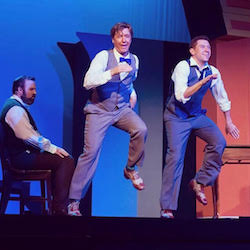
Justin Boccitto (right). Photo by Kenn Stigler.
Describe the structure and style of your class. How would you recommend a student choose what tap class is best for him/her?
“Some people like a lot of repetition, and there are many great teachers who specialize in that. My class is different every time because I don’t repeat a lot of exercises. I start with a call/response warm-up, which requires students to immediately repeat one bar of tap steps that I demonstrate. I like this approach because it gives me a minute to gauge who is in the class, and it wakes up everyone’s mind while, of course, warming up the feet. This goes on for about five minutes. Next, we work on short combo exercises to many different styles of music (jazz, funk, R&B, rock). Then, we work across the floor on more ‘trick steps’ (grab-offs, pullbacks, turns). We then finish with a longer choreography combination for the last half hour of class.”
Should I invest in a quality pair of tap shoes?
“Not right away. A $70-100 pair will suffice. When you start moving into advanced/beginner level classes, it might be good to invest in a pair of Miller and Ben shoes or Capezio K360s. The sound quality and structure of quality tap shoes can really elevate your craft, like a good pair of running or pointe shoes.”
What are the challenges of tap dancing in heels? At what level should a dancer switch from flat taps to heeled taps?
“Dancers should not begin tapping in heels until they reach advanced/beginner level and have been taking class in flats for a while. ‘Broadway style’ tap is a good class to work in heels.”
Many auditions for tap-heavy shows require dancers to perform the choreography one at a time. Are there any tricks or tools to keep cool and confident?
“Work in a studio alone when you can. Film yourself so you have a reference of what elements you need to work on by yourself. The only way to get better at solo tapping is to do it. Take classes where teachers make you work one at a time. Just keep practicing. In the audition, calm down and listen to yourself and the music. Breathe, and think happy thoughts!”
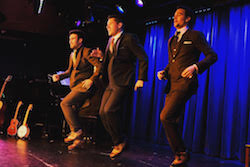
Photo courtesy of Justin Boccitto.
Tap dance seems to return to Broadway in waves. Why do you think this is?
“It seems to be a specialty form of dance these days. I think people also equate tap dancing to ‘old’ music. It’s something Gregory Hines and Savion Glover really worked toward, making the world understand that you can tap to modern music. We see this happening more in the concert dance and music video industries but not yet on Broadway. Perhaps someone just needs to write a contemporary score that is based on the story of a tap dancer!”
Do you have any exciting projects in the works?
“I just finished choreographing the award-winning NYMF musical, Errol and Fidel, for which I won an Outstanding Choreography award. I’ve recently become the Artistic Director of Broadway Dance Center’s new youth training program, Project Broadway, and this October, my musical revue, Song and Dance Men, will perform at Centenary Stage Company, an Equity theater in New Jersey. This is a show I wrote, directed, choreographed and workshopped in NYC two years ago. We now have expanded it for regional theaters. It’s about four guys growing up singing and dancing in a rural community, influenced by Fred Astaire, Gene Kelly and the legends of tap.”
For more information on Justin Boccitto, visit www.justinboccitto.com. For tickets to Song and Dance Men at Centenary Stage Company, head to www.centenarystageco.org.
By Mary Callahan of Dance Informa.


